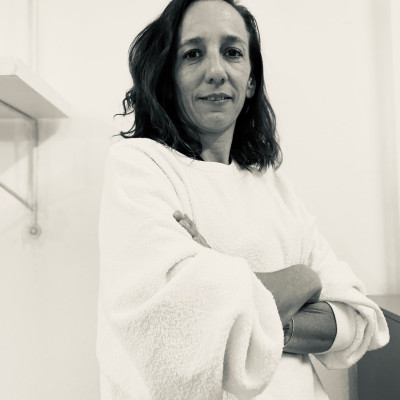5 key facts about this project
At its core, the architecture embodies a blend of modern design principles and contextual sensitivity. The building's form is characterized by a balanced proportion of solid and void, which facilitates ample natural light while maintaining a cohesive visual identity with the surrounding structures. The thoughtful massing creates various outdoor spaces, including terraces and gardens, that enhance the connection between the indoors and outdoors. This fosters a sense of community and encourages social interaction among users.
Functionality is a paramount aspect of the project, as it is designed to serve multiple purposes. The layout incorporates flexible spaces that can adapt to various activities and uses, whether for communal gatherings, working environments, or quiet retreats. This adaptability is crucial in contemporary architecture, where the ability to cater to diverse needs is increasingly important. Each area is intentionally designed to encourage collaboration, creativity, and interaction, making it suitable for a range of users, from families to professionals.
Key architectural elements contribute to the project’s identity. The facade features a sophisticated palette of materials, including concrete, glass, and natural wood, which not only adds visual texture but also reflects an emphasis on sustainability and environmental consciousness. The use of large windows invites natural light deep into the interior, creating a pleasant and inviting atmosphere while reducing reliance on artificial lighting and minimizing energy consumption.
The design includes innovative strategies for addressing environmental concerns. Attention to passive design principles reduces the building's ecological footprint, as elements such as cross-ventilation and thermal massing enhance energy efficiency. Rainwater harvesting systems and green roofs are integrated into the design, promoting sustainability and enhancing biodiversity within the urban landscape.
Unique design approaches are evident in the structure’s integration of public and private spaces. Open layouts enhance social interactions, while strategically placed alcoves and quiet areas allow for personal retreat. This duality illustrates a keen understanding of modern lifestyles, where balancing communal engagement with individual privacy is essential.
Moreover, the project reflects cultural narratives associated with its locality. It pays homage to traditional architectural motifs while embracing modern aesthetics, creating a dialogue between the past and present. This respectful integration of history enriches the user experience and provides a sense of belonging within the neighborhood.
The careful consideration of user experience is deeply embedded in the project’s design philosophy. From the moment visitors approach the building, they are welcomed by an inviting entry that reflects the significance of arrival. Thoughtful landscaping complements the architecture, creating serene pathways and gathering spaces that extend the building's footprint. These outdoor areas are vital in promoting a sense of community while offering respite from the urban hustle.
In summary, this architectural project exemplifies a harmonious blend of functionality and aesthetic sophistication. It showcases a deep understanding of contemporary needs and the importance of sustainability, while also being rooted in its cultural and geographical context. The unique design approaches adopted in the project not only enhance its utility but also foster a strong sense of community. For those interested in exploring the architectural plans, sections, designs, and ideas that underpin this project, further detailed presentations are available for review, offering a deeper insight into the richness of its conception and execution.


 Jeremy Cyrille Barla Ekwe,
Jeremy Cyrille Barla Ekwe,  Nelson Christian Ndjoune Kosso,
Nelson Christian Ndjoune Kosso,  Marion Limouzy,
Marion Limouzy,  Caroline Veronique Engome épouse Barla Ekwe
Caroline Veronique Engome épouse Barla Ekwe 























